
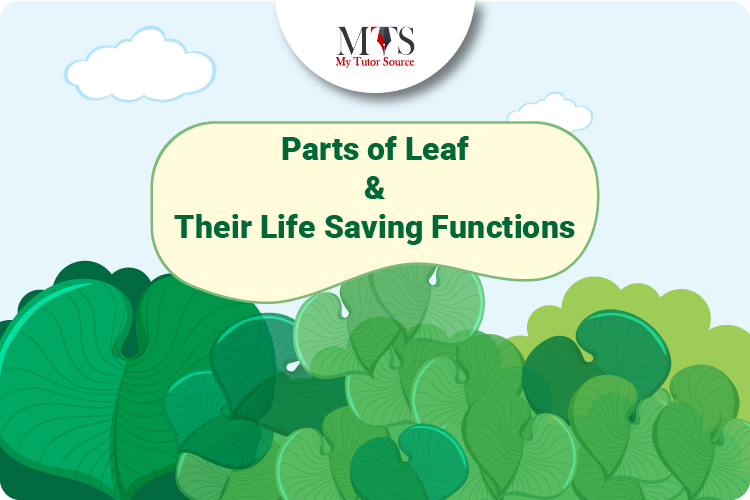
A leaf is considered one of the most important parts of a plant as it is a source of food for the plant itself and also for other animals who feed on it. This increases the value of a leaf highly in our daily lives as well.
This flat green part of a plant helps it to be the primary producer of the general food chain and it also helps maintain the right carbon-oxygen balance in the environment. Without it we humans wouldn’t be able to breathe in the clean air that we do.
Behind the life-saving functions of the leaf, there are several basic parts of it that support it to provide these functions.
The anatomy of a leaf reveals that the classification of leaf parts is usually done based on two categories that include
Here you will find info about both classification and how these parts of a leaf help it to sustain lives of its own and many others.
If we examine the leaf externally, there are six most important parts of a leaf as mentioned below:
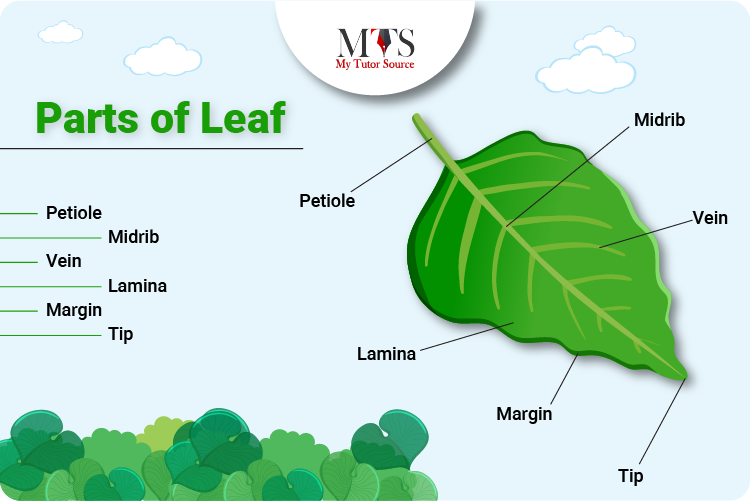
Petiolate: Includes the plants that are connected to the stem through the petiole.
Sessile: Includes the plants that connect directly to the stem and lack petiole.
More commonly known as the leaf stalk, the petiole of the leaf is the branching part that attaches the leaf to its stem and supports it. Without the presence of a petiole, the leaf would not be able to stay connected to its stem body and there would be no activity to support its life.
Although there are some leaves that connect directly to the stem and do not require the petiole, in most leaves, this stalk is a very important part.
The petiole basically connects the veins of the leaves to the tiny tubes that are inside the petiole. In this way, the flow of minerals and water is made possible through the stem to the leaf.
The length of the petiole varies with the type of plant. Plants such as rhubarb or celery have a longer petiole whereas some plants have no petiole like the grass.
Hence the petiole of a leaf serves two main functions. Firstly it supports the leaf by connecting it to the stem body and secondly, it transports the products of photosynthesis through the connection of the leaf to the stem.
The main functions of a petiole include
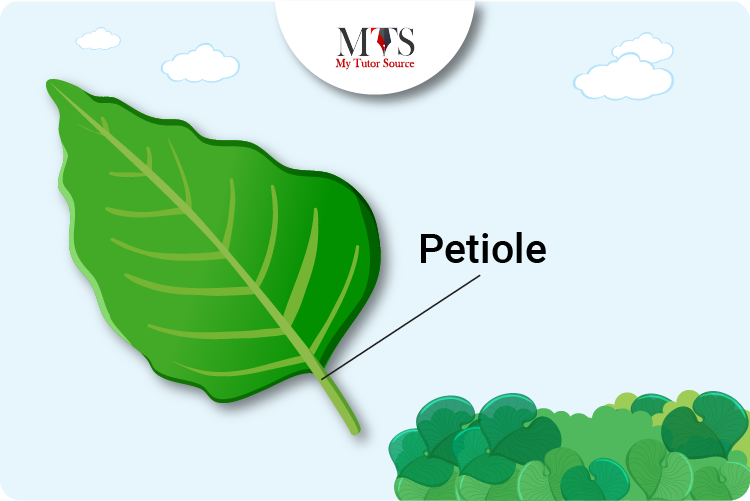
This is the main part of the leaf. Lamina is the flat green part of the leaf in which photosynthesis is actively occurring. The lamina of a leaf is also known as the leaf blade and it contains the veins that emerge from a main mid vein. The midvein connects one lamina of the leaf to the other through the petiole.
Without the lamina, there would be no photosynthesis and eventually, the plant would not be able to provide the food and minerals for its own survival.
There are several factors that make one lamina differ from the other lamina. The differentiating factor could be the shape of the lamina which is determined by its edges, the composition of veins and their pattern on the lamina or it could be the number of laminae present in a particular leaf.
The main functions of a lamina include
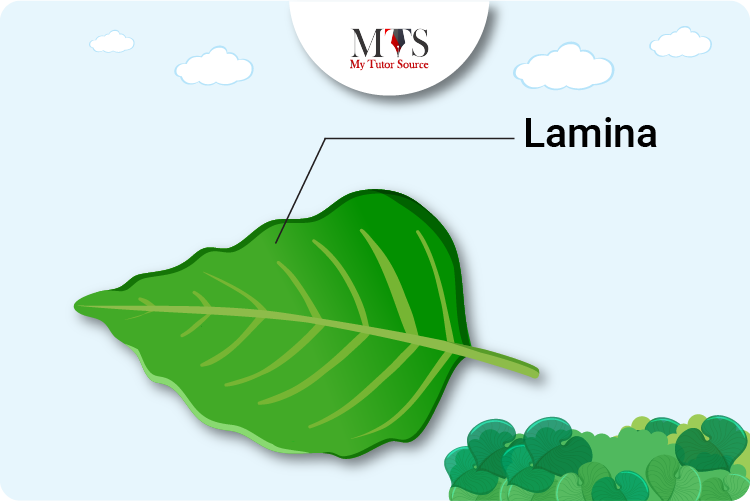
A midrib is the primary linear vein that runs through the length of the leaf. It gives rise to other branching veins on the lamina of a leaf. It usually extends from the leaf base to the apex of the leaf. The midrib is also commonly known as the midvein and contains two major components including the
Xylem: Helps in the transportation of water
Phloem: Helps in the transportation of food such as proteins and sugars.
The main functions of a midrib include:
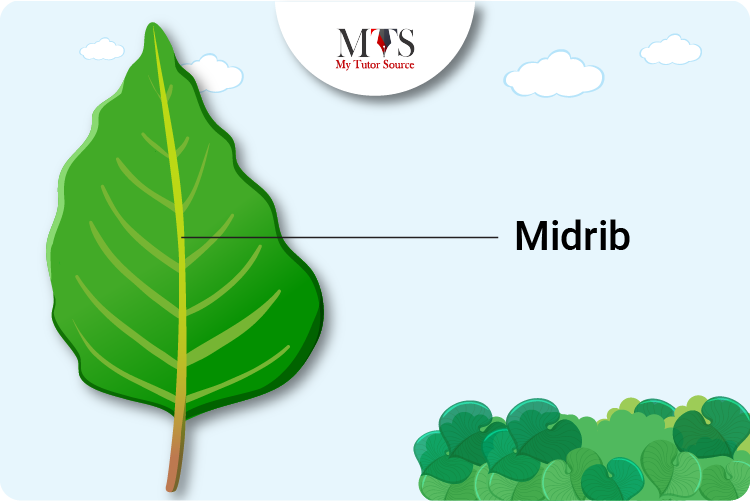
The midrib gives rise to several other veins on the lamina of a leaf that extends in the form of small branches from the midvein. These emerging veins are composed of the xylem and phloem which as discussed earlier, facilitate the passage of nutrients across the plant.
The veins collectively make up the vascular system of the plant. This system is the main source of facilitating the nutrients across the plant body.
The main functions of a vein or a vascular system include:
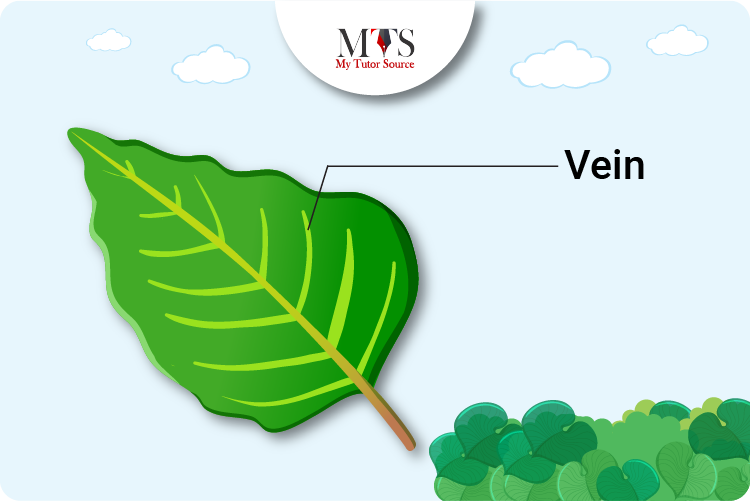
The leaf margin is basically the lining or the edge of the leaf that defines the shape of a particular leaf. The leaf shape is determined by the type of leaf margin of that leaf. Based on the properties, there are several different types of leaf margins giving rise to different leaf shapes. These different types of leaf margins include:
ENTIRE
LOBED
TOOTHED
DENTATE
CRENATE
In this way, the leaf margins differ from each other giving rise to several different shapes of a leaf.
The main functions of a plant margin include:
The tip of the leaf where it all usually ends is known as the leaf apex. The tip or apex of the leaf can vary in shape depending on the type of plant. It can be bluntly sharp or smoothly rounded or it can be something between these two ranges. Although there are not many specified functions related to the apex of the leaf, it does help the leaf to stand erect in the straight position
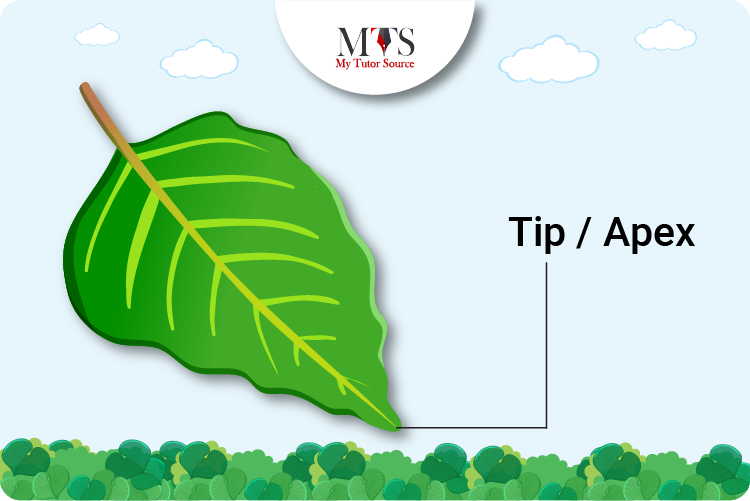
There are several important parts of a leaf that functions internally. These parts usually include:
In the internal layer of the leaf that is the epidermis, there are several pores on the epidermis. These pores are collectively known as stomata and individually each pore can be called a stoma. These pores are basically responsible for the gaseous exchange between the plants and the environment. It helps in the regulation of carbon dioxide and water exchange happening between the atmosphere and the leaf.
Each stoma is surrounded by a layer of cells known as the guard cells. These cells surrounding the stoma regulate the opening and closing of the pores. The rate of exchange is regulated in this way. When there needs to be more gaseous exchange, the guard cells allow the opening of stoma where it restricts the opening when there needs a lesser amount of gaseous exchange.
These cells make up the epidermis layer of a cell and provide the leaf with protection from external and internal factors. Externally, it protects the leaf from restricting the entrance of unknown factors such as harmful microorganisms. Whereas internally it protects the leaf by restricting the excess loss of water during evaporation.
Hence these cells control the incoming and outgoing materials from and in the plant respectively.
These cells are usually located between two-layer epidermis cells. Being tightly packed between these two layers, mesophyll cells are responsible for the active occurrence of photosynthesis, and other than this it facilitates the transportation of nutrients.
The vascular bundles mainly include the xylem and the phloem. Both of these components are situated in the veins of the plant and serve individual functions.
The xylem of the plant is responsible for the transportation of the water to all parts of the plant whereas the phloem is responsible for the transportation of food to all parts of the plant.
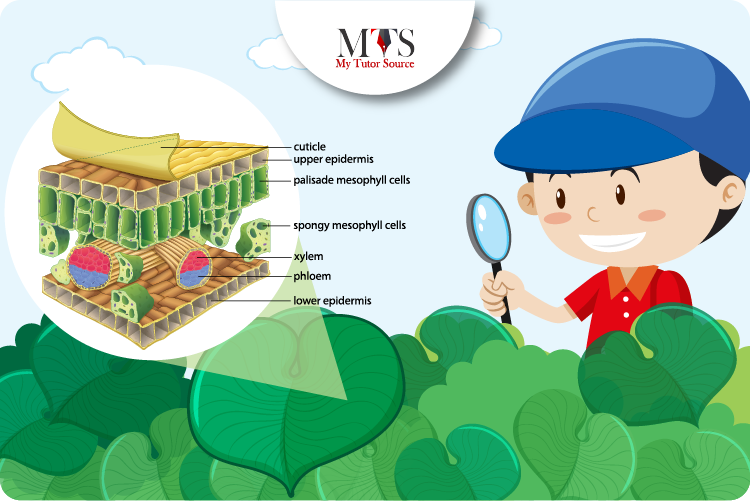
There are several parts of a leaf located on the external and internal levels that collectively work to facilitate the normal functioning of a leaf and support the survival of the plant eventually. Our private tutors provide ideal services of home tuition related to biology and all other relevant subjects. If you are interested to learn all about the anatomy of plants and their associated parts, from a professional perspective, then you are just a click away! Contact us and learn from our private home tutors.